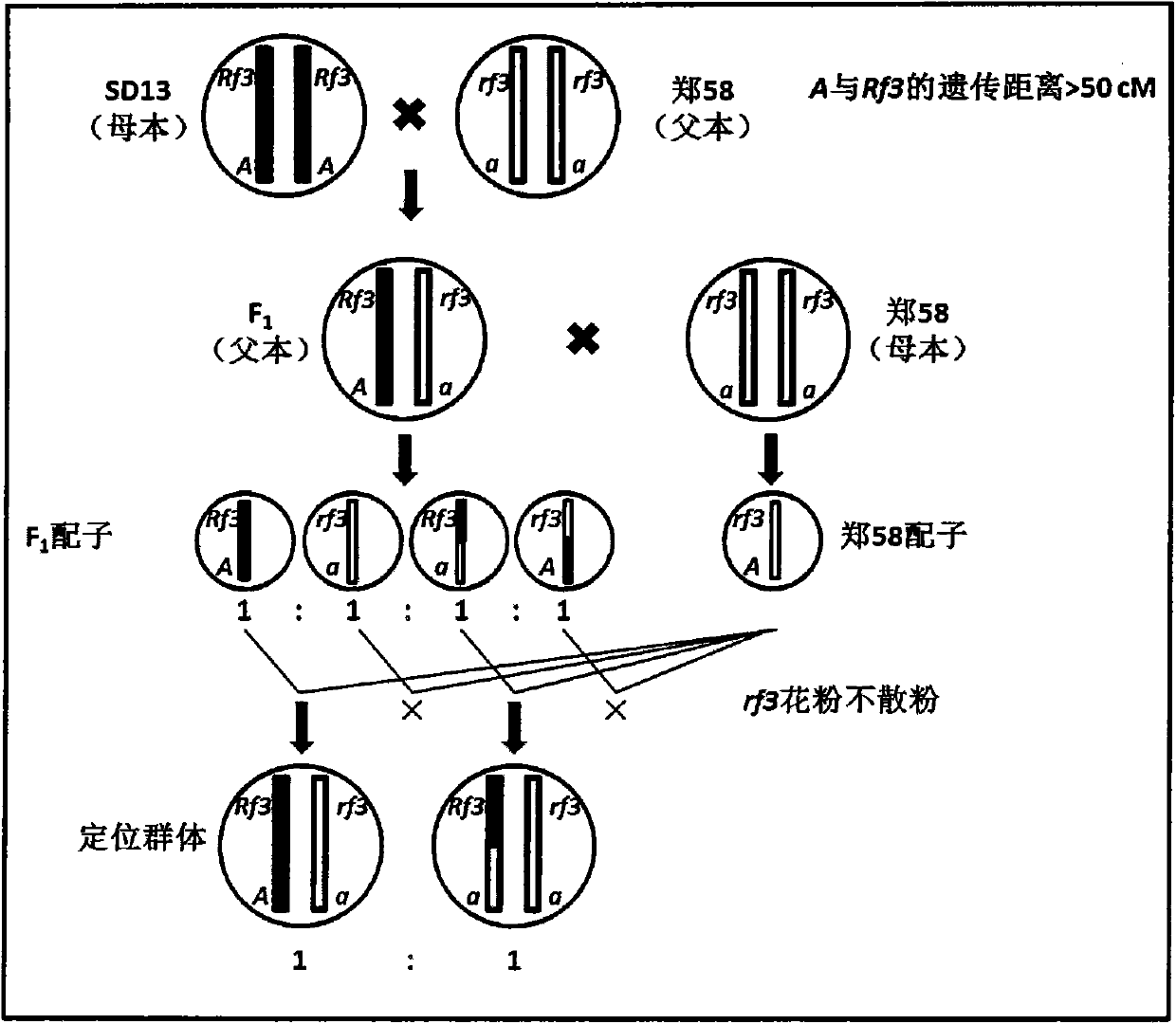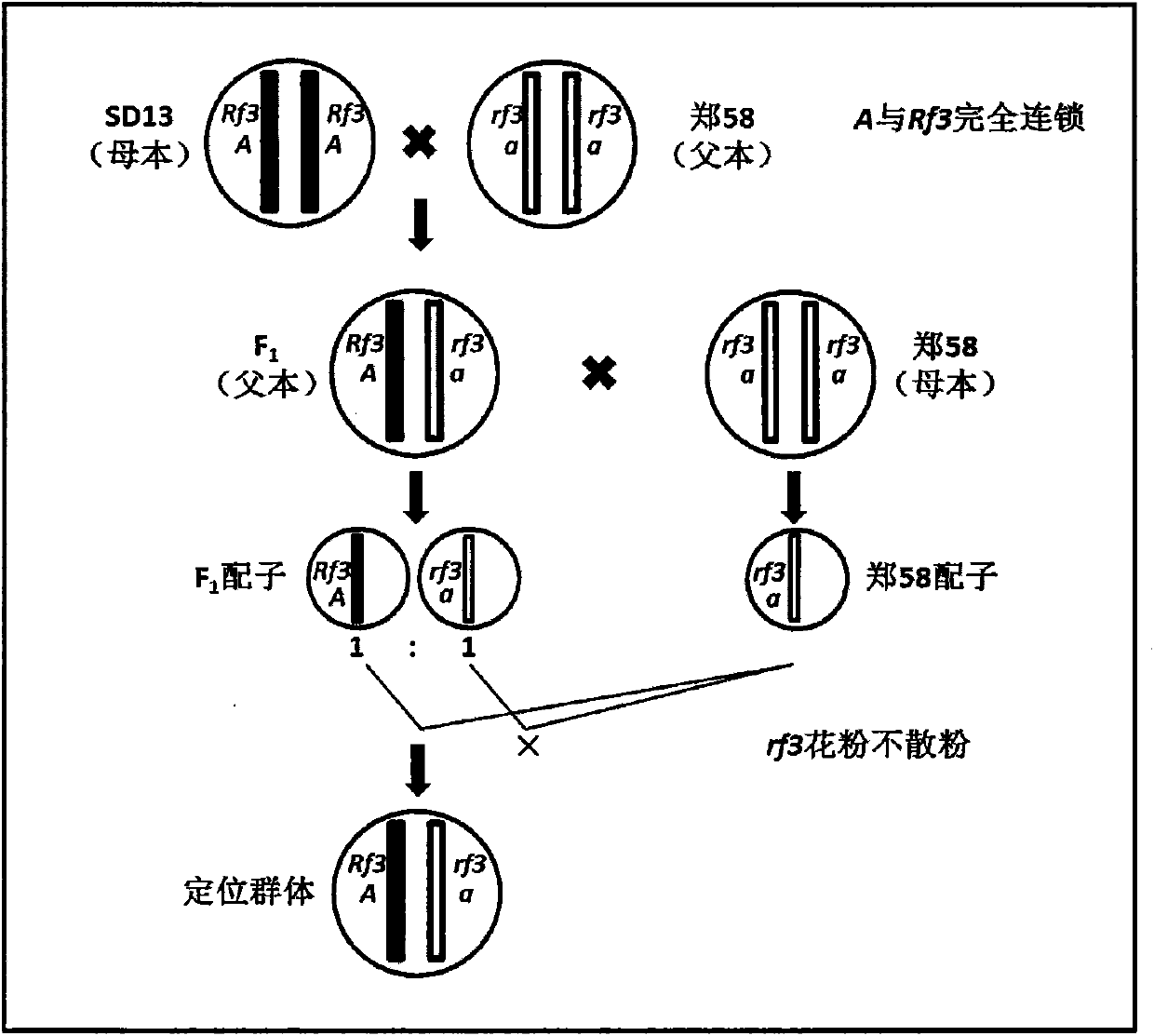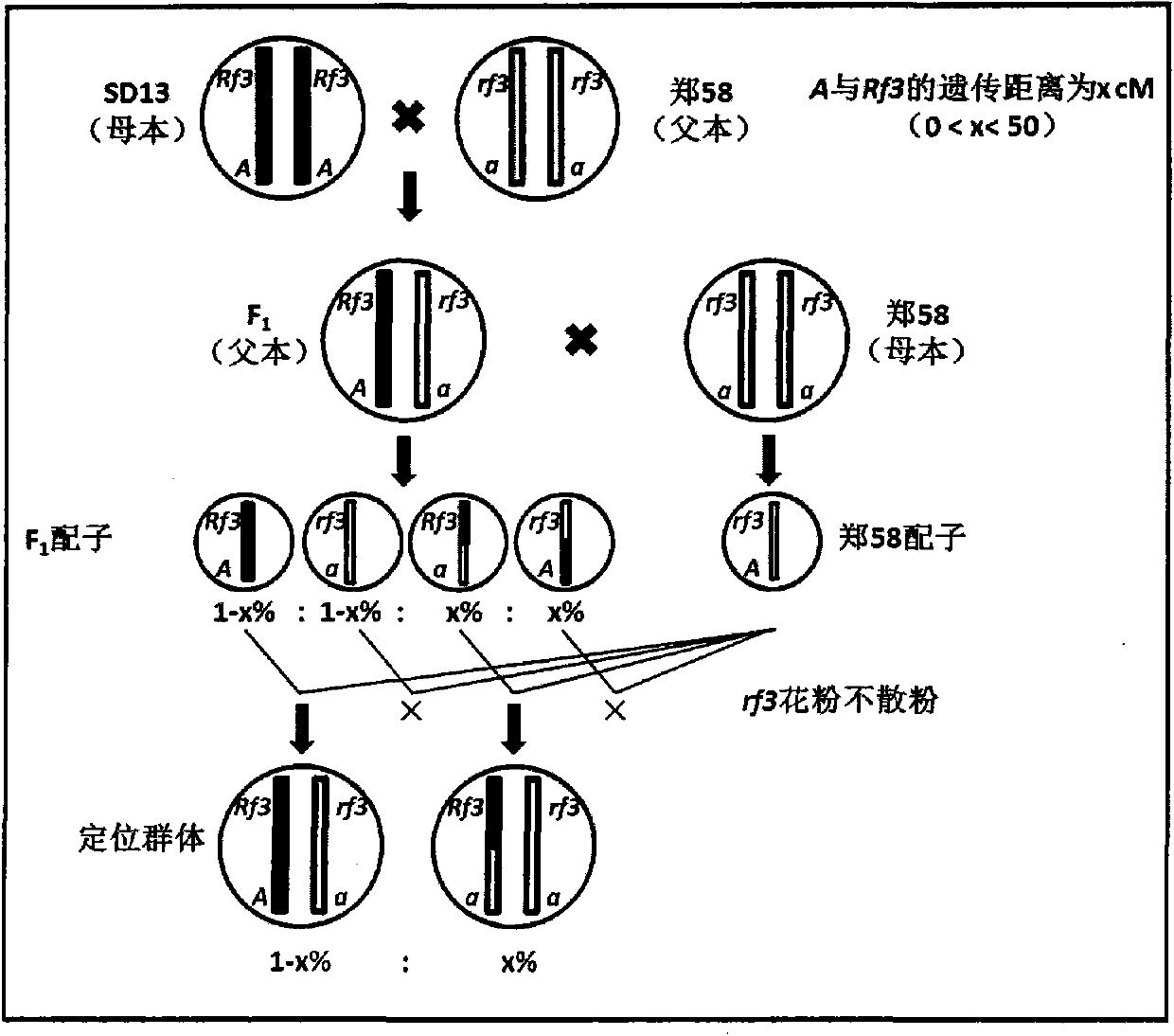New method for mapping corn S-type cytoplasm male sterility fertility restoring gene Rf3
A fertility restoration gene, cytoplasmic male sterility technology, applied in the direction of plant genetic improvement, botanical equipment and methods, microbial determination/inspection, etc. Save time and improve positioning efficiency
- Summary
- Abstract
- Description
- Claims
- Application Information
AI Technical Summary
Problems solved by technology
Method used
Image
Examples
Embodiment Construction
[0022] Through the localization process of Rf3 gene, the present invention is described in detail:
[0023] (1) In the summer of 2012, at Changping Farm in Beijing, the maize inbred line SD13 (S(Rf3 / Rf3)) with the restorer gene was used as the female parent, and Zheng 58 (N(rf3 / rf3)) was used as the male parent. f 1 (S(Rf3 / rf3)).
[0024] (2) In the winter of 2012, Hainan Lingshui South Breeding Base, using F 1 Pollinate Zheng 58 and harvest 20,000 seeds (N(Rf3 / rf3)).
[0025] (3) DNA was extracted from 20,000 individual seeds.
[0026] (4) To screen and develop the polymorphic and band-specific molecular markers on the long arm of maize chromosome 2 between SD13 and Zheng 58.
[0027] (5) Among the above 20,000 DNAs, 2,000 DNAs were randomly selected for detection with molecular markers, and several molecular markers closely linked to the Rf3 gene were found by using the two-point test method: bnlg1520, A7, A105, UMC1525, A81, A121, A165 , CG2, A134, A70, p22 and UMC1736...
PUM
 Login to View More
Login to View More Abstract
Description
Claims
Application Information
 Login to View More
Login to View More - R&D
- Intellectual Property
- Life Sciences
- Materials
- Tech Scout
- Unparalleled Data Quality
- Higher Quality Content
- 60% Fewer Hallucinations
Browse by: Latest US Patents, China's latest patents, Technical Efficacy Thesaurus, Application Domain, Technology Topic, Popular Technical Reports.
© 2025 PatSnap. All rights reserved.Legal|Privacy policy|Modern Slavery Act Transparency Statement|Sitemap|About US| Contact US: help@patsnap.com



